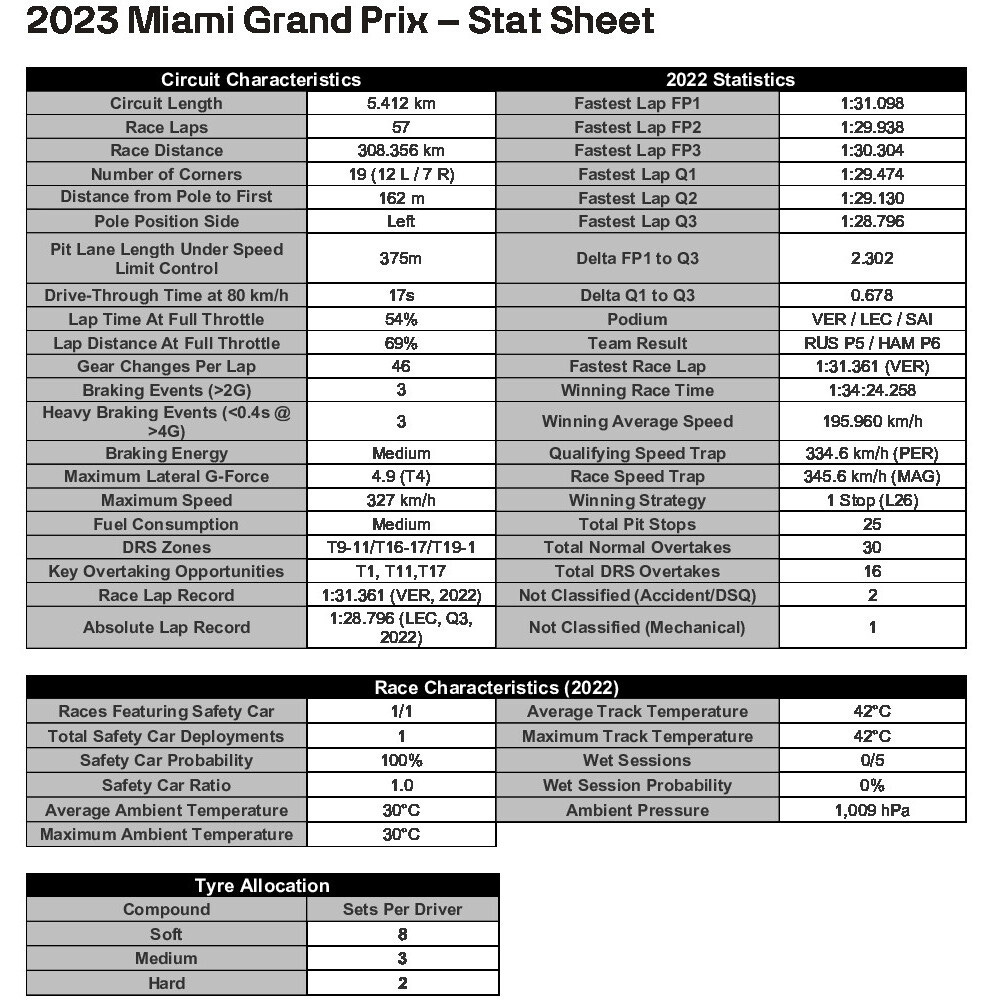Circuit Characteristics
The Miami International Autodrome is 5.412km long and features 19 corners - 12 lefthanders and seven right. It’s a flat track with almost no elevation changes
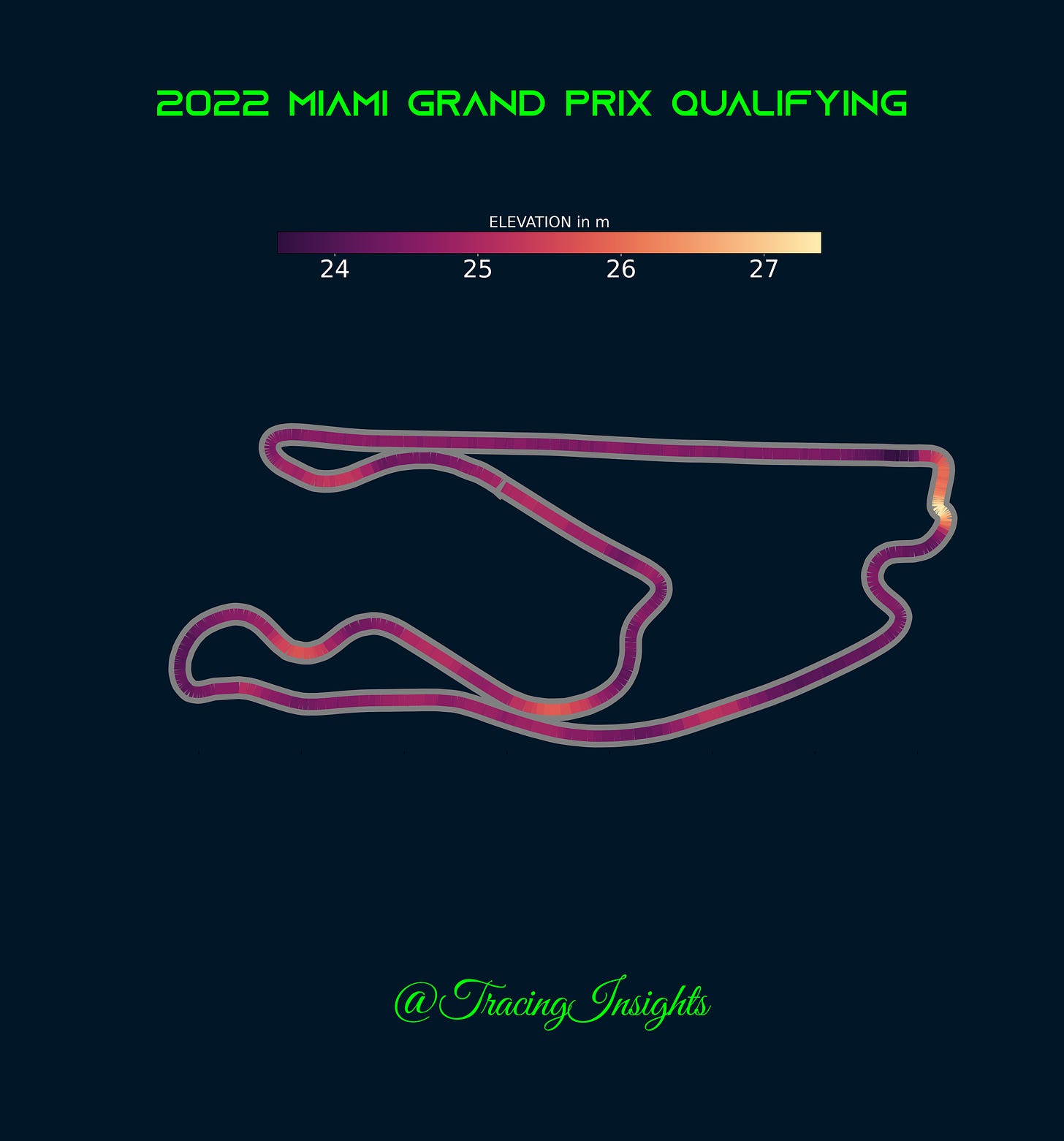
The sectors are all quite different. Sector one is dominated by faster, sweeping turns, while the middle sector is a tighter, twisty sections. Sector three is dominated by the long back straight and the hairpin at turn 17.
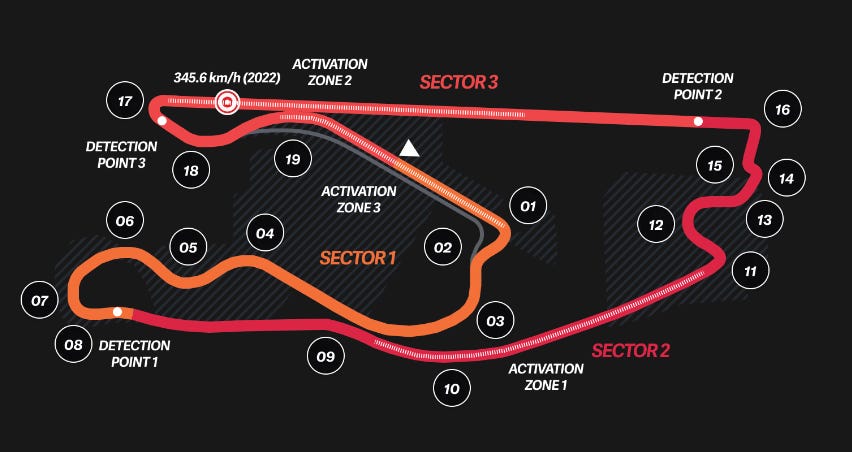
The track layout is interesting because it has many low and high-speed corners, but not very many in the mid-range. There are also several long straights and three DRS zones.
This circuit ranks high in terms of top speeds achieved comparative with other circuits, with only Monza, the Circuit Hermanos Rodriguez in Mexico, and the new Las Vegas circuit expected to see higher top speeds this season. Miami, together with Baku, are among the highest circuits for drag sensitivity. This is partly down to the need to optimise the car for the 1.28km long straight between turns 16 and 17.
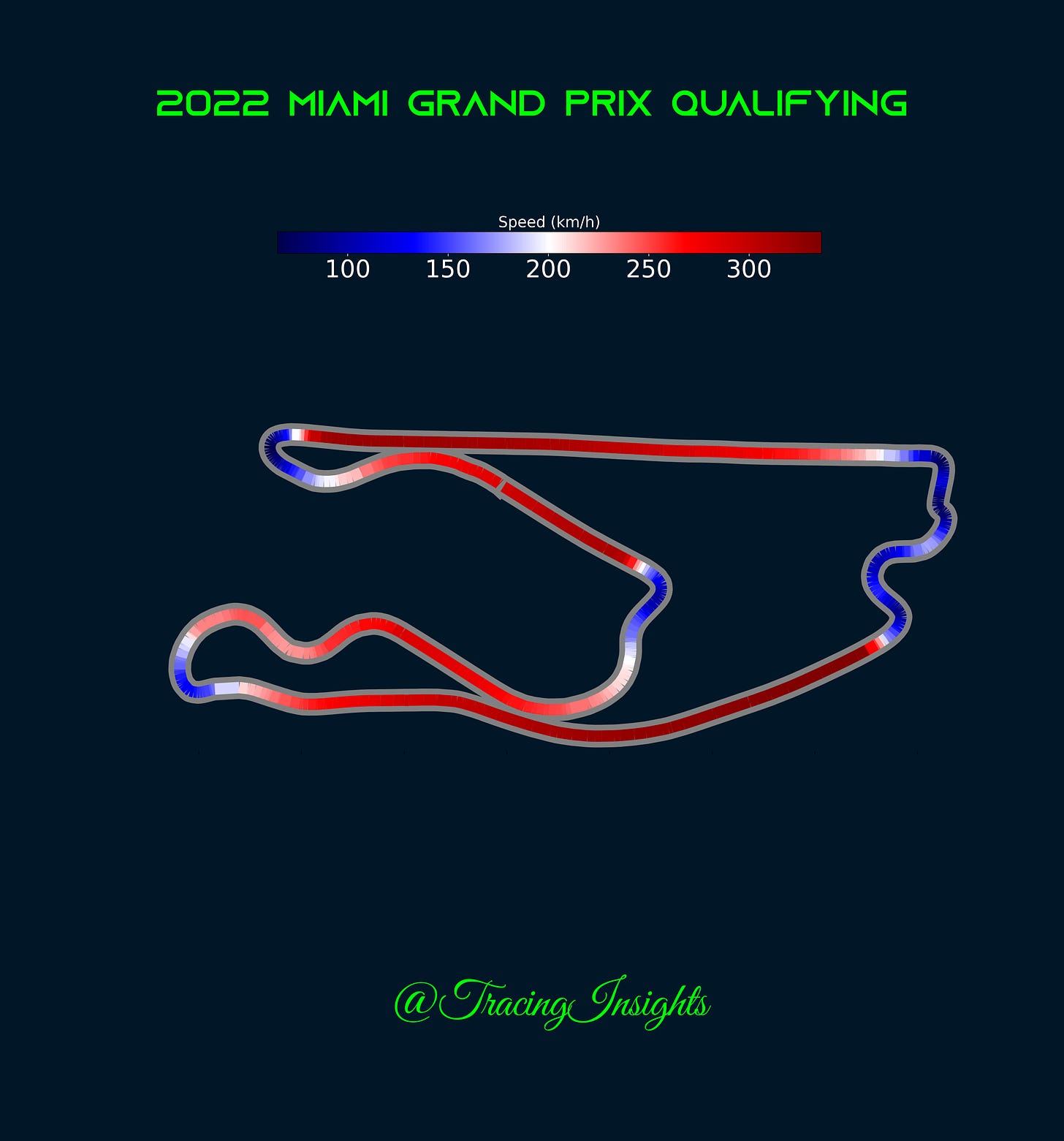
Track Evolution
The track is very narrow in places, particularly in the final sector, which increases the chances of Safety Cars and Virtual Safety Cars. Surprisingly, the track’s characteristics share a few similarities with venues like Barcelona, in that the high-speed corners are early in the lap, therefore heating up the tyres, and the end of the lap features twisty corners where the hot tyres suffer – as there is no grip left.
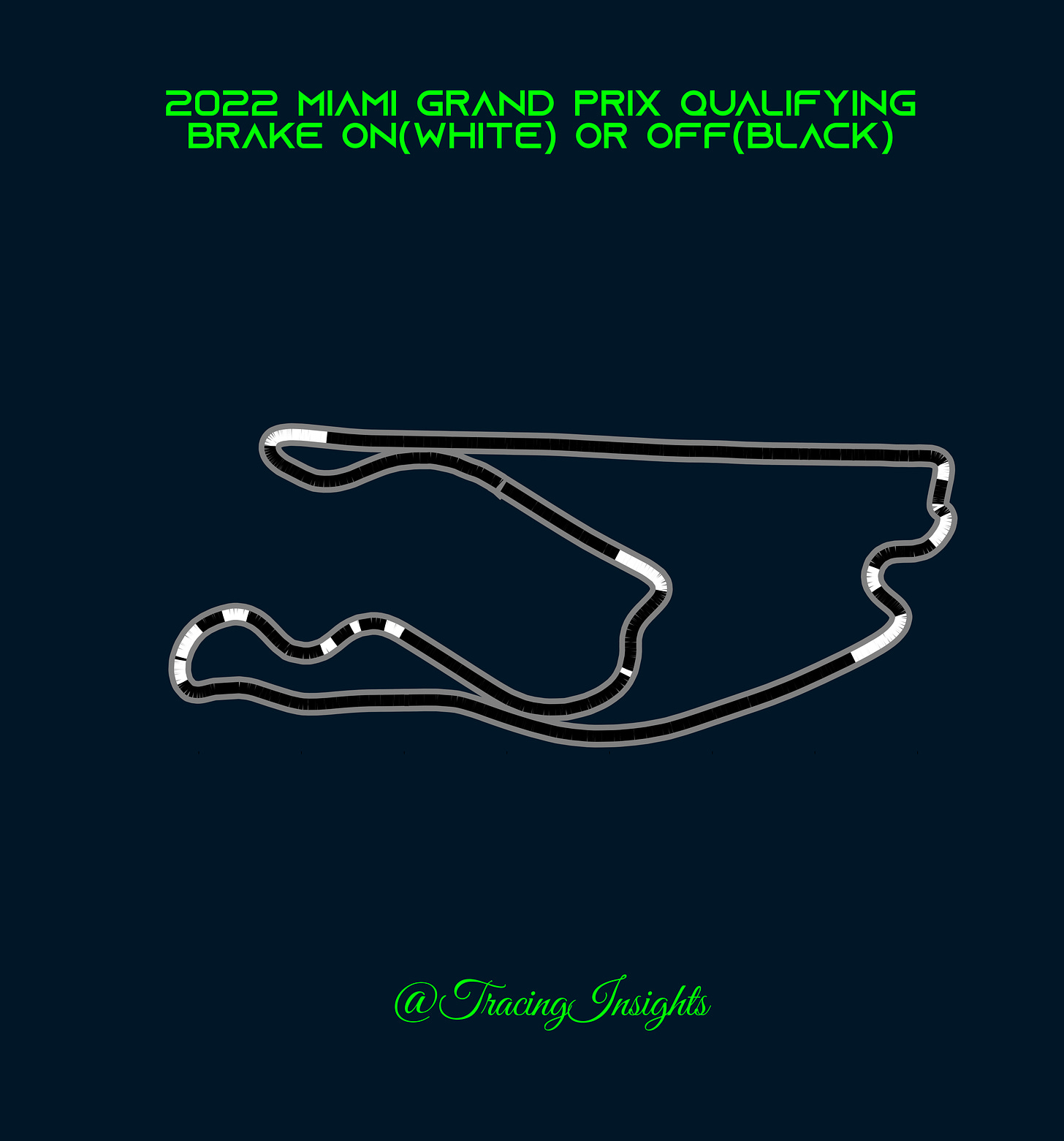
However, tyre overheating might be a bit easier than in Barcelona, due to Miami’s long straights. Track evolution on the surface is likely to be high, so lap times will be tumbling as the weekend progresses.
Circuit Changes
There have been several small tweaks to the track following the first edition of the Miami Grand Prix last year.
These include the track being resurfaced with a new aggregate ahead of this year's race, offering improved grip for the drivers with the aim of increasing overtaking opportunities. The previous surface, composed of limestone and granite, had been treated with powerful jets of water. The new surface is an unknown factor and will be analyzed by Pirelli technicians during a track inspection carried out on Wednesday during the week of the race.
The positioning of some of the Tecpro barriers, along with rumble strips, has also been altered ahead of the weekend.
Weather
Ambient temperatures are expected to reach up to, and possibly higher than, 30°C. This is the second highest statistically expected ambient of the year after Qatar, and ahead of Singapore. Last year's Grand Prix saw similar conditions with George Russell describing it as "a brutal race." This was partly due to the high ambient temperatures but also the humidity. Hot temperatures are an important factor here too, as keeping the cars cool in traffic will be a challenge and may lead to drivers backing off to cool the brakes and Power Units. Drivers spend 69% of Lap Distance on full throttle
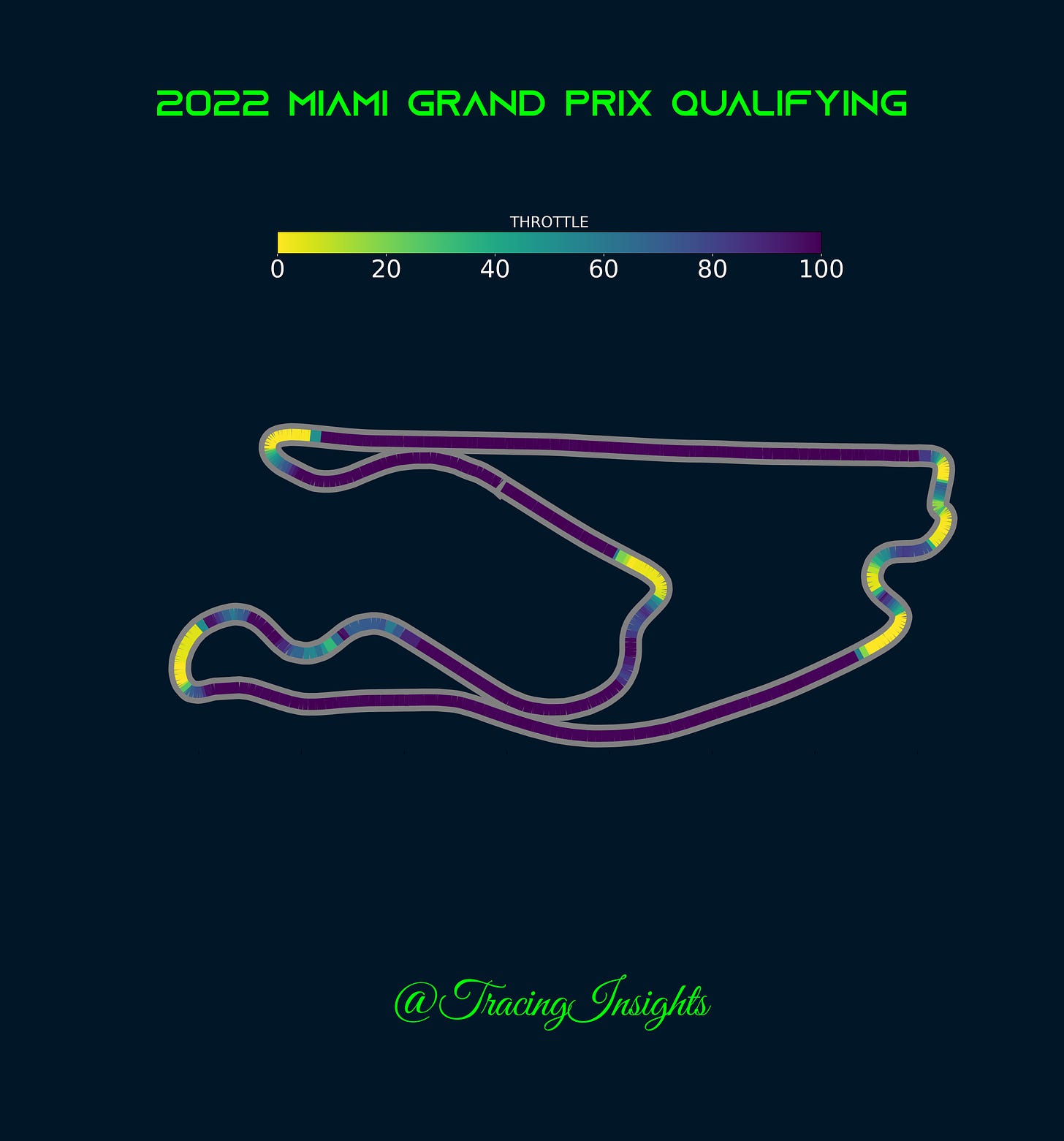
The weather on the coast of Miami is very changeable. In 2022 the race was spared by rain, which fell only when the starting grid was being assembled with the high temperatures meaning that the track dried out before the race started. The possibility of downpours has to be taken into serious consideration.
Tyre Choices
In Miami, the compounds chosen by Pirelli are C2 as the P Zero White hard, C3 as the P Zero Yellow medium, and C4 as the P Zero Red soft. The track, with 19 predominantly slow corners and three straights, is moderately demanding on tyres. The dark new tarmac, hot ambient and rather abrasive (from jet washed) surface leads to very high tyre temperatures making management a necessary challenge in the race.
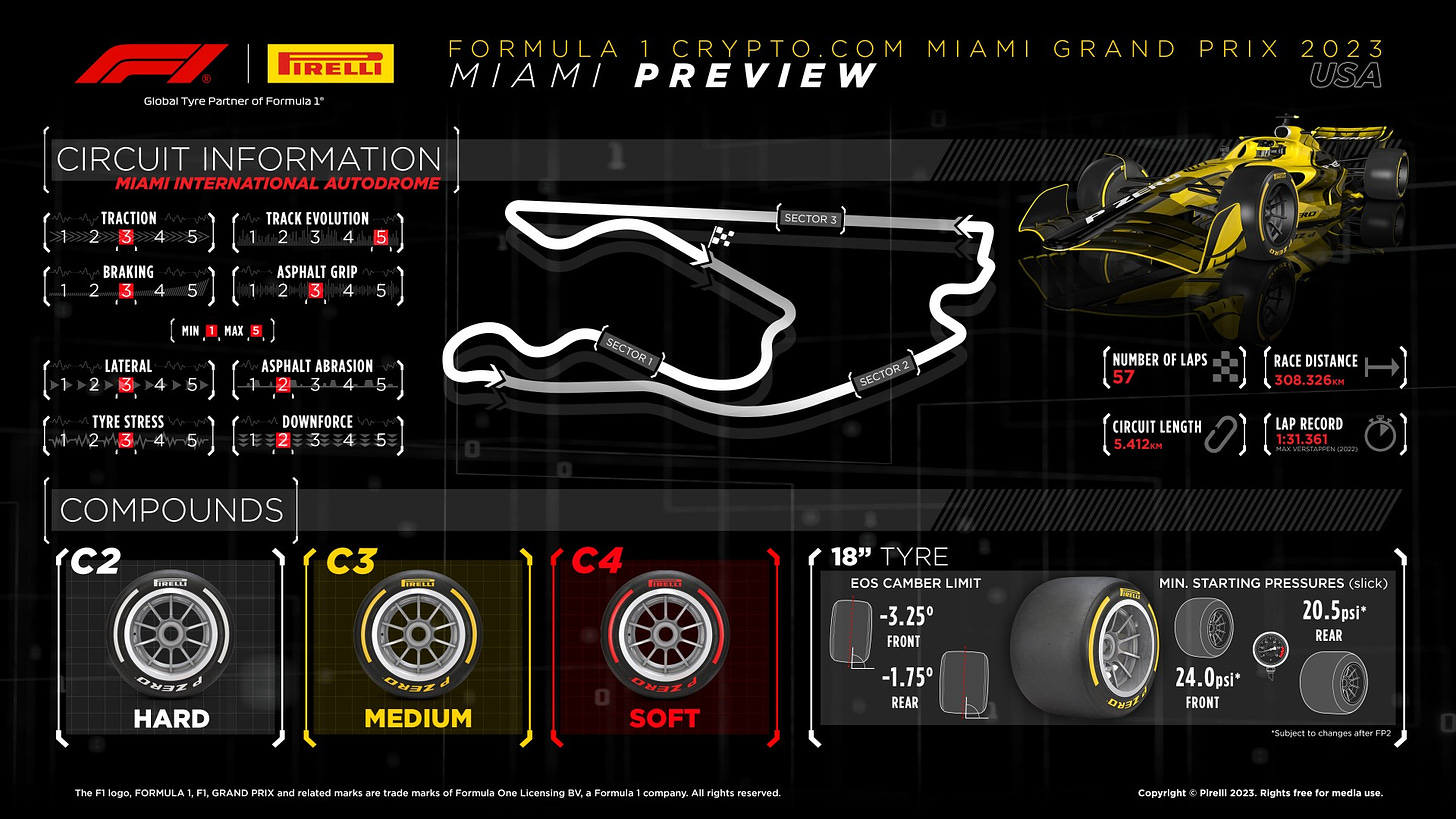
The choice of three compounds from the middle of the range, rather than softer sets, is mainly due to the usually high track temperatures which reached 59°C last year. The most used compounds in the 2022 race were medium and hard.Most of the drivers competed the grand prix with just one pit stop. The race was neutralised twice by a safety car and a virtual safety car, which allowed some teams to make a second pit stop.
Overtaking Spots
The fact there are three long straights each with DRS zones and each leading into slow corners does bode well in terms of overtaking opportunities. Turn 11 and Turn 17 will likely be the key places to watch out for. We witnessed 54 ontrack passes last year
https://twitter.com/TracingInsights/status/1587303529328553984
Car Setup
The track layout presents a challenge to the car setup with the need to have downforce for the fast corners early in the lap (T1 to T8) and especially the twisty T11-T16, but without being draggy on the two very long straights. Good mechanical grip/traction out of low speed is primordial to lap time here as T8, T16, T17 are all low-speed corners leading onto long straight segments.
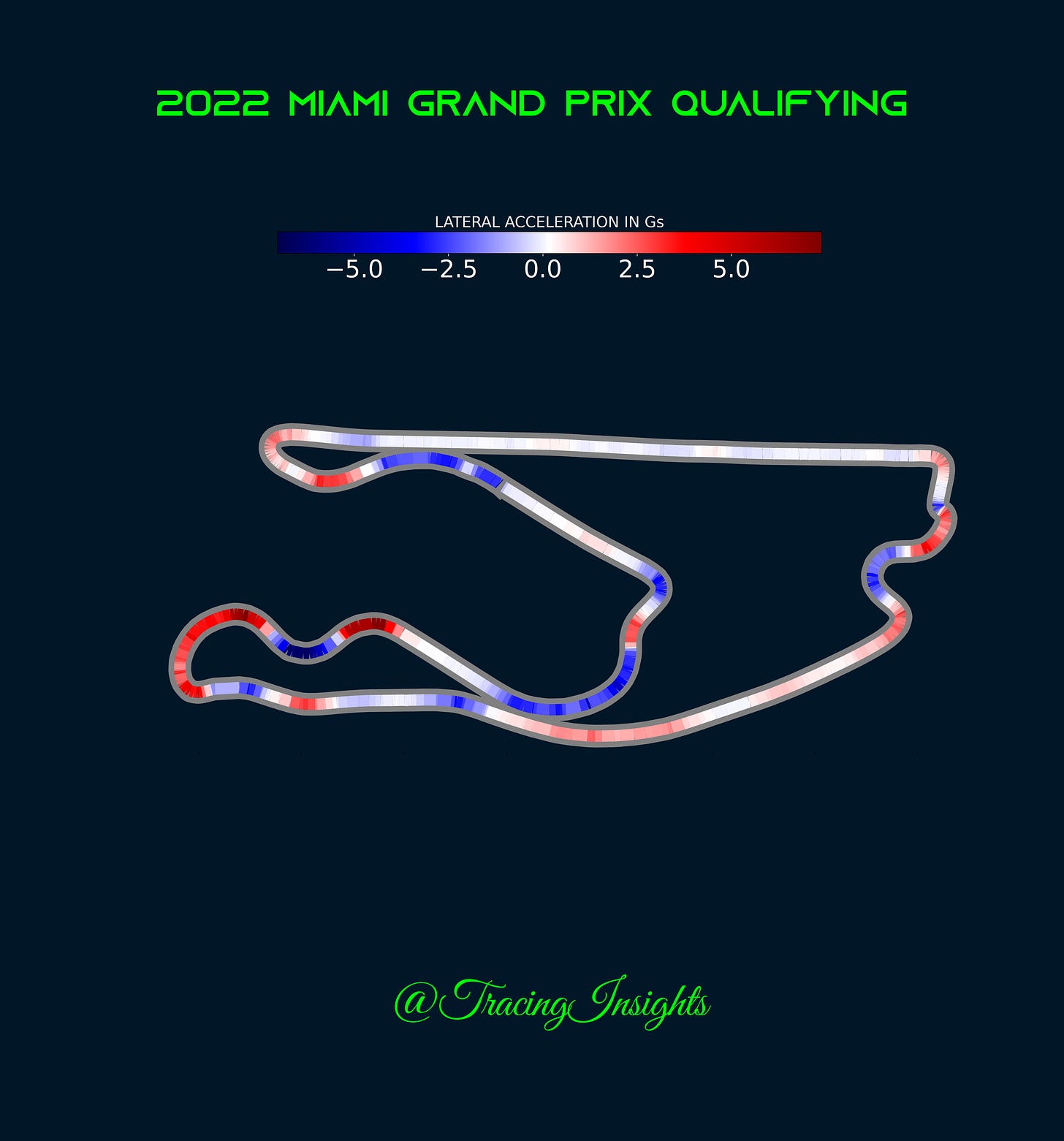
You want a high ride height with high downforce for the fast corners early on, a low drag set-up for the long straights and then a lower ride height with a high downforce level for the twisty sections. So, you must weigh up where the priorities are and what will get you the most lap time.
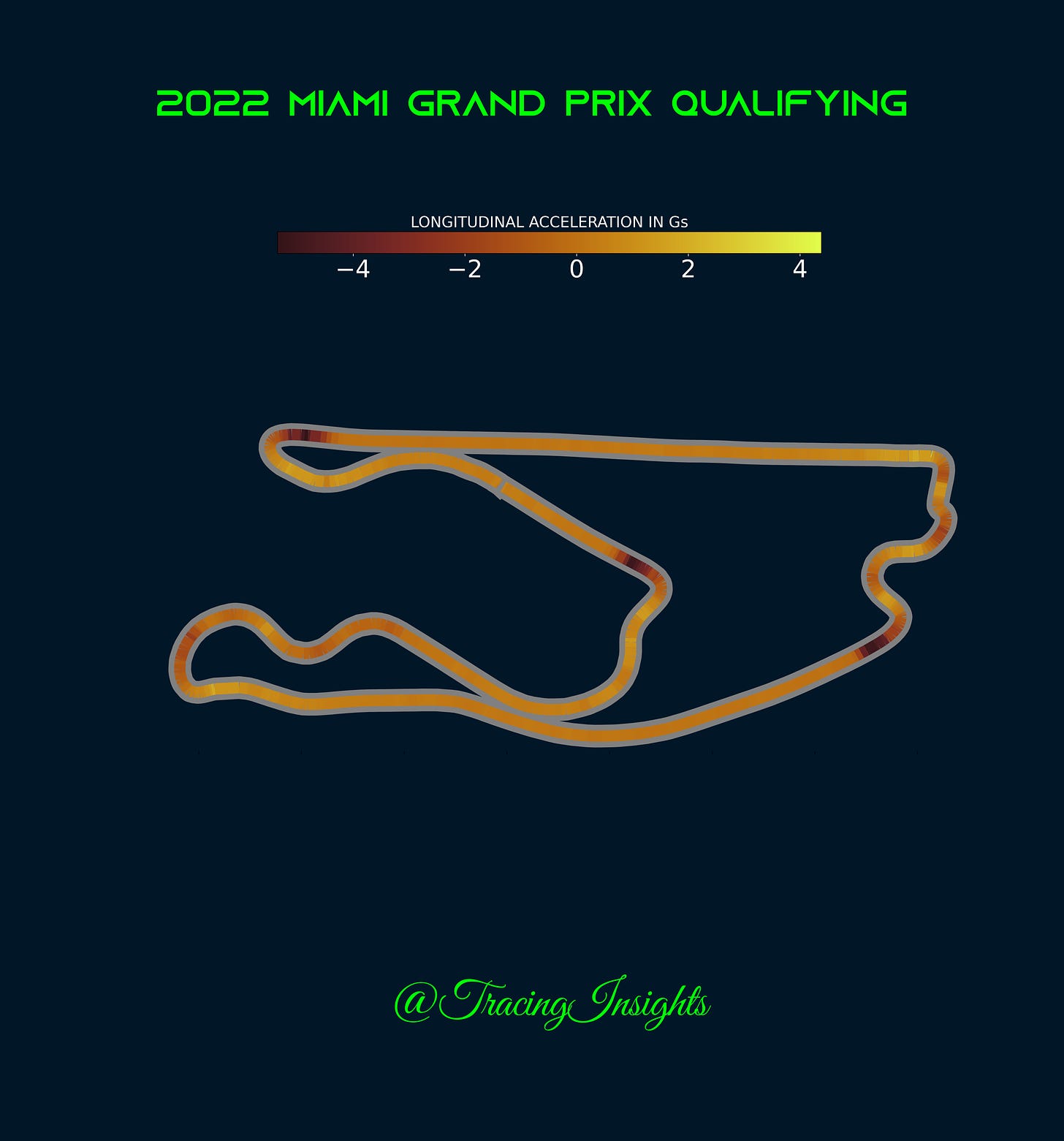
Safety Car Threat:
As with any Grand Prix, safety is of paramount concern, and Miami is no exception. With the track being quite narrow in places, particularly in the final sector, there is an increased likelihood of Safety Cars and Virtual Safety Cars. Last year's race saw one Virtual Safety Car deployment, which then turned into a full Safety Car.
https://twitter.com/TracingInsights/status/1589499583880900609
The high ambient temperatures, coupled with the abrasive surface, also make tire management a necessary challenge in the race. Hot temperatures are an important factor here too, as keeping the cars cool in traffic will be a challenge and may lead to drivers backing off to cool the brakes and power units.
